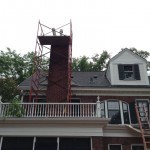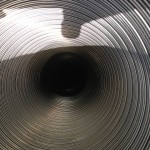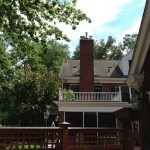If you’re replacing your fireplace and are concerned about creosote and soot build-up or about cracks forming in your chimney, then you’re likely weighing your options about which type of fuel you should burn. Here at 2nd Generation Chimneys, we have years of experience working with all different types of chimneys and we wanted to help our customers figure out which type of fireplace is right for them: gas, electric or wood-burning.
Give us a call if you have any questions or if you need any Minneapolis chimney cleaning services.
Types of Fireplaces
There are several different types of fireplaces that you can choose from, but which one will be safest for your chimney? Here’s a quick explanation of the pros and cons of each different type of fireplace in regards to chimney health and safety.
- Electric – With electric fireplaces, there isn’t any need for a chimney because there are no byproducts of the fireplace. So if you’re concerned about the health of your chimney, then an electric fireplace is a good option because your chimney won’t actually get any use. However, electric fireplaces tend to use a lot of electricity to generate heat, which can be very expensive.
- Gas – While gas fireplaces are very popular because of their efficiency, their exhaust gases can produce acid. They may not create creosote or soot deposits like wood-burning fireplaces, but the acid produced can eat away at the inside of your chimney. Also, water vapor is another by-product of burning gas, which can condense on the inside of your chimney and cause problems.
- Wood-burning – If you’re interested in a more rugged experience with your fireplace, then wood-burning might be a good choice. Just be aware that soot and creosote are created as a by-product of burning wood. These substances can build up on the inside of your chimney and are one of the most common causes of chimney fires. Make sure that you always burn well-seasoned and dry wood because green wood can cause even more creosote and soot to build up. And if by chance you’ve already had a chimney fire, you may want to consider calling 2nd Generation Chimneys, Inc. for our chimney restoration services. We can make sure your chimney is safe for use again.
No matter what kind of fireplace you have, getting regular Minneapolis chimney cleaning is a great way to help keep your chimney working well and your fireplace burning safely.



